- News
- Reviews
- Bikes
- Components
- Bar tape & grips
- Bottom brackets
- Brake & gear cables
- Brake & STI levers
- Brake pads & spares
- Brakes
- Cassettes & freewheels
- Chains
- Chainsets & chainrings
- Derailleurs - front
- Derailleurs - rear
- Forks
- Gear levers & shifters
- Groupsets
- Handlebars & extensions
- Headsets
- Hubs
- Inner tubes
- Pedals
- Quick releases & skewers
- Saddles
- Seatposts
- Stems
- Wheels
- Tyres
- Tubeless valves
- Accessories
- Accessories - misc
- Computer mounts
- Bags
- Bar ends
- Bike bags & cases
- Bottle cages
- Bottles
- Cameras
- Car racks
- Child seats
- Computers
- Glasses
- GPS units
- Helmets
- Lights - front
- Lights - rear
- Lights - sets
- Locks
- Mirrors
- Mudguards
- Racks
- Pumps & CO2 inflators
- Puncture kits
- Reflectives
- Smart watches
- Stands and racks
- Trailers
- Clothing
- Health, fitness and nutrition
- Tools and workshop
- Miscellaneous
- Buyers Guides
- Features
- Forum
- Recommends
- Podcast
BUYER'S GUIDE
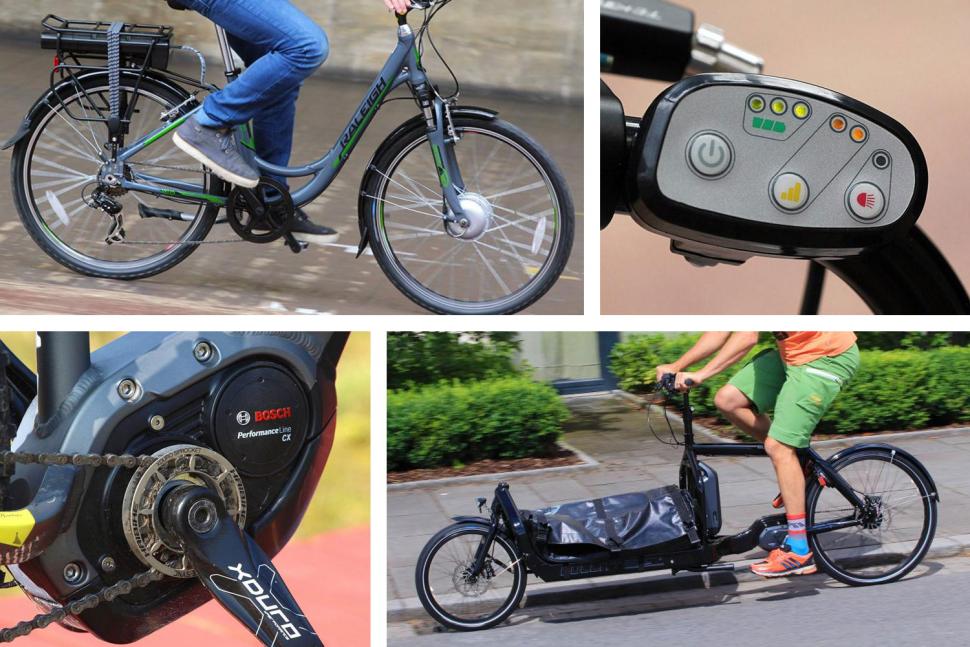 Buyer's guide to electric bikes July 2018
Buyer's guide to electric bikes July 2018What are electric bikes good for? Should you get one?
Variously called electric bikes, pedelecs and electric-assist bikes, e-bikes combine a fairly conventional bike with a battery and motor that helps out when you're pedalling to make it easier to get up hills, accelerate away from lights and cruise along.
E-bikes are very popular in Europe, especially among older riders who appreciate the speed boost they provide. They've begun to take off in a big way in the UK in the last couple of years; retailers that specialise in e-bikes report healthy sales.
An e-bike is not just an electric scooter. To be road legal in the UK, it has to have pedals that can propel the bike, hence the designation "electric-assist". As long as the motor doesn't operate if you're travelling at more than 15.5mph (25km/h) and puts out no more than 250 watts, 14-year-olds and over can ride it without a licence, tax, insurance or helmet.
The regulations previously permitted "twist-and-go" e-bikes where the motor operated without the rider pedalling, as long as they came under the 250 watt power limit and the motor didn't propel the bike over 15.5mph. However, those bikes were banned by new regs that came into force in January 2016, though twist-and-go bikes bought before that seem to be still legal to use.
Yet another change to the rules in April 2019 made twist-and-go e-bikes legal again as long as you or the retailer get Single Vehicle Approval from a designated test centre. They have to meet all the other e-bike requirements.
Arguably, this is slightly silly, as you can still get the full 250W assist from some e-bikes while turning the pedals over so gently that you're not contributing anything to the bike's forward motion.
If it doesn't fall inside those rules, any electric bike is treated as a motor vehicle for which the usual rules about licensing and insurance apply. That means some of the more outlandishly powerful e-bikes and e-bike concepts out there aren't legal in the UK without type approval, and you'd need a licence, motorcycle helmet, insurance and so on to use them on the roads.
In Europe there's another option: S-pedelecs. These higher-speed e-bikes are limited to 45km/h (28mph) and 500 watts. In countries where they are permitted, you need a moped licence, insurance and suitable helmet to ride them on the road, and they must have rear view mirrors. Buzzing long effortlessly at almost 30mph is exhilarating, but it's a thrill that you have to jump through hoops to experience legally in the UK. S-pedelecs available in the UK are often marketed as 'not for use on public roads’ or ‘for off-road use only’. It's a dubious disclaimer and trade organisations are strongly discouraging dealers from trying it.
Why an e-bike?
As Court Rye of US e-bike site ElectricBikeReview.com mentioned in this interview with Treehugger there are as many ways of using an e-bike as there are regular bikes. People turn to e-bikes because they want to go further or faster than their level of fitness makes them comfortable, or they want to haul loads that are difficult on a conventional bike.
For example, one rider I know does his shopping and other gear-hauling on an electric-assist cargo bike, allowing him to live car-free in hilly San Francisco.
Others choose e-bikes because they're great for getting to the office without ending up lathered in sweat, or because they're simply not as young and fit as they once were but want to stay active.
James Heslop of the Cambridge branch of e-bike specialist electricbikesales.co.uk agrees that the uses of e-bike vary hugely. "You might get two people buying the same bike, but their idea of what they're going to use them for will be very different," he says.
But Heslop adds that there's a big secret that's gets people on e-bikes as well as the practicalities: riding an e-bike is a lot of fun.
It starts with the power kick away from a stop. Instead of struggling to get up to speed, you have the power of a decent club cyclist giving you an extra shove. That gets you to 15mph faster than most cars. It's like having a super-power, except you don't have to wear your underpants on the outside.
Then there's climbing. Instead of toiling your way up hills, you zoom along, those extra 250 watts more than compensating for the increased weight of the bike.
As our Dave Atkinson put it when he reviewed the Koga E-Nova RT, good e-bike could be a genuine alternative to a second car — and a lot more fun to boot.
Let's take a look at your options.
E-bike styles
For the most part, e-bikes are based on either flat-bar hybrids or mountain bikes, and the hybrid style is the most common. Riding positions vary between the slightly stretched out stance of a cross-country mountain bike to sit-up-and-beg positions of bikes based on Dutch town bikes.
The larger wheels and skinnier tyres of a hybrid style e-bike make it a bit nippier, while the wider tyres and smaller wheels of an e-mountain bike are great for round-town pothole-bashing and allow you to venture on to tracks and trails.
Electric mountain bikes are probably the fastest-growing group at the moment, with retailers reporting lots of interest from riders who want help getting uphill so they can zoom down under gravity.
James Heslop says that these bikes are attracting a younger demographic to electric bikes, and are also attractive to older riders who want the versatility of a mountain bike. The boost from the motor overcomes the big disadvantage of a mountain bike on the road, the drag from knobby tyres, he says.
For the most part, though, Heslop says e-bikes are being used round town, and the hybrid style dominates. The European influence and practical intent mean these bikes often have a rack, mudguards and lights too.
The newest category is e-road: drop-handlebar lightweight road bikes with electric assist. Just a few years ago these only existed as concept bikes that hid the battery and motor inside carbon fibre frames to demonstrate that an e-bike could be light and look normal. Now, they're everywhere and available from big names like Trek, Giant, and even Pinarello as well as smaller players like mail order specialist Ribble.
Motors
E-bike motors can be built into either of the wheels or the frame. Wheel placement is more common on cheaper e-bikes; from about £1,700 they tend to be built into the frame and so drive the chain directly.
Motor placement is a point of debate among e-bike fans, though there's a school of thought that says it doesn't really matter that much and people should just go back to debating Macs v Windows.
However, one significant difference is that a motor in the frame will be coupled to the cranks. That means the control electronics can include a sensor that detects how hard you're pedalling and meter out the assistance accordingly.
That has advantages and disadvantages. Having your power assisted according to how much you put in can feel more natural, but you might want all the available assistance without having to go full-tilt yourself. James Heslop says another advantage is that the ability of the system to better react to how much power you're putting out means you'll get more range.
Various manufacturers make kits that bike makers then build into bikes. Referred to as the 'eGroup', this includes the motor, battery, control electronics, switches, and display — all the bits you don't find on a conventional bike. Names to look for include Bosch, Brose, Panasonic, Yamaha, Sony, Impulse, Bafang and Shimano.
An option that's become very popular in the last couple of years are systems that hide the battery inside the down tube and even the motor too. The two common ones are the Mahle ebikemotion system, which has a the motor in the rear hub, and the Fazua Evation, which incorporates the battery and motor into a single module in the down tube.
Batteries & charging
Lithium-ion batteries are everywhere, so it's no surprise to find them powering e-bikes. There are several different lithium-ion chemistries, and some are more energy-dense than others. The details are beyond the scope of this article, but the executive summary is that you get what you pay for: more expensive e-bikes have higher-tech batteries that are lighter for the charge they hold and charge faster.
Battery capacity is measured in watt-hours or amp-hours. Since most e-bikes now have 36V motors, converting the two units just means multiplying by 36: a 10 amp-hour battery is the same as a 360 watt-hour battery. Capacity is most often given in amp-hours, abbreviated Ah.
Capacity is typically around 7.5-14Ah, though some go as high as 18Ah. Many manufacturers offer a battery upgrade option.
Batteries degrade over time, holding less charge as they age. The quality of the battery makes a difference, so look for a reputable named battery manufacturer in the spec, such as Sony, Samsung or Panasonic, and make sure the warranty covers the battery for at least two years.
Lithium-ion batteries are typically rated to last 800 full charge cycles. That's about three years of weekday commuting. They survive longer with careful use; you should get at least 2,000 half-charge cycles, so topping up an e-bike's battery at every opportunity is good practice.
Those are pessimistic estimates though. In practice, a battery life of several years is quite easily attainable.
A full charge typically takes between two and a half and six hours depending on the manufacturer, battery capacity, and battery chemistry. Most people will just charge the battery overnight, though if you have a long commute and are concerned about battery longevity having a second charger at the office is a good idea.
Batteries with larger capacities and longer lifespans have become available in the last couple of years. Samsung, German battery supplier BMZ, and Panasonic make larger cells with improved chemistries that extend the claimed lifespan to 2,000 charge cycles. Energy density is higher for the new cells, too, so 700Wh batteries are possible, but the extra cost seems to have deterred most e-bike manufacturers from offering them so far..
Home on the range
The range — how far an e-bike will go on one charge of the battery — is probably the most important specification. If your commute involves a big hill, for example, you don't want to run out of juice halfway up it. Without power, an e-bike is just a heavy bike, and that's no fun on a steep climb.
A longer range usually means a bigger battery and more cost and weight, so it's not necessarily an unalloyed benefit. If you're only going to do a five mile commute, you don't need a 50-mile range. Nevertheless, you should buy a bike with a higher range than you absolutely need because the range will drop as the battery ages and loses capacity.
The range you get in practice will depend on how much you pedal, the assist level you choose (see below), the terrain you ride and how fast you go. You'll go further on a charge in the flatlands of Cambridge than the hills of Sheffield, but you might have more need for an e-bike in the hills anyway.
ElectricBikeReview's Court Rye reckons a good rule of thumb for range is to divide the battery capacity in watt-hours by 20. That gives you the minimum range if you use full assist all the time, or ride in 'twist-and-go' mode. Dial down the assistance and you'll go further; you might get as much as 40-50 miles from a charge of an 11Ah battery if you're prudent.
Assist levels
You can usually choose how much help the motor provides, typically in three or four increments. More sophisticated e-bikes also have a 'walk' mode that means you don't need to push the bike along yourself, which is especially useful if you need to get it up a ramp.
Choosing your assist level helps control the bike's range, as mentioned above. It also gives you the choice of just how much effort you want to put in. If you're riding for exercise, but just want a bit of help on the hills, or to go further, use the minimum setting. Feeling lazy? Dial it up to maximum and blow serious roadies away on the hills.
Costs
Good e-bikes are not cheap, even compared to good unassisted bikes. You can pick up a very basic machine for £500, but high-performance e-bikes, with light frames, high-capacity batteries and smart control electronics cost over two grand; bikes worth having start at about £1,000.
That's a lot of money. Or is it? A London Zone 1-3 Travelcard costs £1,696 per year, a Bristol City peak Travelpass is £1,200 and a Cambridge Megarider Plus Xtra bus ticket is £1,152. Even allowing a budget for maintenance and spares over two years even a high-end e-bike starts to look very competitive.
The low end e-bikes are not the bargains they appear to be either, according to James Heslop, who warns against buying a cheap Chinese e-bike off eBay. "You won't be able to get the parts if anything goes wrong," he says. He adds that reliability of these bikes is often poor. You can end up spending a lot if something does go wrong as mechanics work out the problem with unfamiliar electronics.
As for running costs, the electricity to power your e-bike will cost about 7p per charge. You'll eventually have to replace the battery, and that's the biggest expense of long-term e-bike ownership; they cost between £200 and £600.
Looking after the battery is key to saving money in the long run. Lithium-ion batteries like to be used, and shouldn't be stored empty or fully charged. If you want your battery to last years, treat it well.
Where to buy
Even more than conventional bikes, trying e-bikes before you buy is essential. The way the control electronics put out the power varies a lot between e-bikes, and you'll have your own preference in the resulting feel of the bike.
That means a specialist e-bike dealer is a must, especially given the size of the investment you're about to make. There are now e-bike specialists in most major cities, though they tend to be most common in places that already have lots of cyclists. It's no coincidence that electricbikesales.co.uk's shops are in London, York, Oxford, Cambridge and Bristol.
An e-bike specialist will explain the various bike options available, and impart essential knowledge such as how to care for the battery and use the controls and other options to get the most out of your e-bike.
For lots more about e-bikes, pop over to our sister site ebiketips.
About road.cc Buyer's Guides
The aim of road.cc buyer's guides is to give you the most, authoritative, objective and up-to-date buying advice. We continuously update and republish our guides, checking prices, availability and looking for the best deals.
Our guides include links to websites where you can buy the featured products. Like most sites we make a small amount of money if you buy something after clicking on one of those links. We want you to be happy with what you buy, so we only include a product if we think it's one of the best of its kind.
As far as possible that means recommending equipment that we have actually reviewed, but we also include products that are popular, highly-regarded benchmarks in their categories.
Here's some more information on how road.cc makes money.
You can also find further guides on our sister sites off.road.cc and ebiketips.
road.cc buyer's guides are maintained by the road.cc tech team. Email us with comments, corrections or queries.
John has been writing about bikes and cycling for over 30 years since discovering that people were mug enough to pay him for it rather than expecting him to do an honest day's work.
He was heavily involved in the mountain bike boom of the late 1980s as a racer, team manager and race promoter, and that led to writing for Mountain Biking UK magazine shortly after its inception. He got the gig by phoning up the editor and telling him the magazine was rubbish and he could do better. Rather than telling him to get lost, MBUK editor Tym Manley called John’s bluff and the rest is history.
Since then he has worked on MTB Pro magazine and was editor of Maximum Mountain Bike and Australian Mountain Bike magazines, before switching to the web in 2000 to work for CyclingNews.com. Along with road.cc founder Tony Farrelly, John was on the launch team for BikeRadar.com and subsequently became editor in chief of Future Publishing’s group of cycling magazines and websites, including Cycling Plus, MBUK, What Mountain Bike and Procycling.
John has also written for Cyclist magazine, edited the BikeMagic website and was founding editor of TotalWomensCycling.com before handing over to someone far more representative of the site's main audience.
He joined road.cc in 2013. He lives in Cambridge where the lack of hills is more than made up for by the headwinds.
Latest Comments
- lesterama 1 hour 35 min ago
A friend told me that Gravaa doesn't work with inserts. Visma actually glued their tubeless tyres on to avoid tyre detachments! Sounds like a...
- EddyMax 1 hour 53 min ago
I can’t let that one pass. I have no wish to start another (yawn) Carlton/Hatch/etc debate but it must be recognised that taste in cycling...
- Velophaart_95 1 hour 55 min ago
That was my first thought when I saw, and read it........
- qwerty360 2 hours 2 min ago
My understanding was traffic data also suggests that its actually made driving quicker not slower in Paris....
- Benthic 2 hours 17 min ago
"...pedestrians remain unable to access the site due to safety reasons." Who is causing the danger?
- mdavidford 2 hours 25 min ago
You missed the most important part of the Cycling UK rebrand, which was them taking a side in the cycling cat debate.
- mitsky 3 hours 26 min ago
"... struck by a driver..." http://rc-rg.com
- Rendel Harris 3 hours 38 min ago
That's only for longer journeys; obviously for short trips he employs the sedan chair.
- Tony W. 4 hours 19 min ago
In accordance with the highway code ? bus driver was breaking the speed limit, overtaking a child on a bicycle, he should've as far right as...
- polainm 4 hours 35 min ago
One is permantly in misery mode, the other all blacked out in stealth mode.
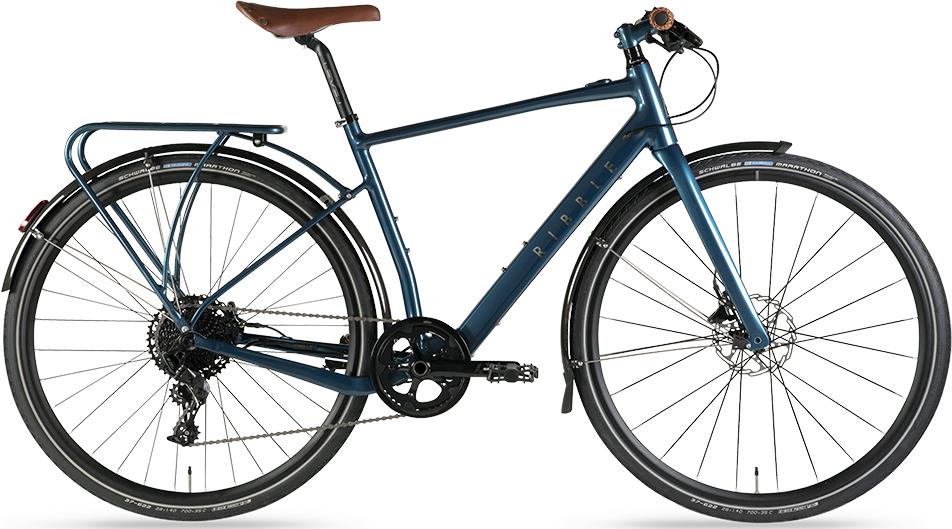

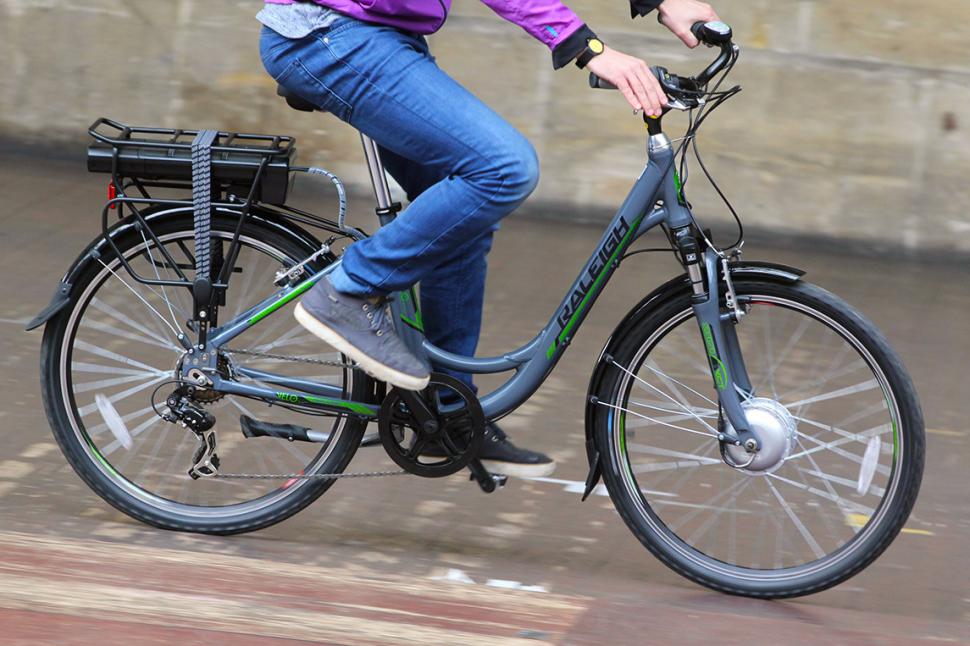

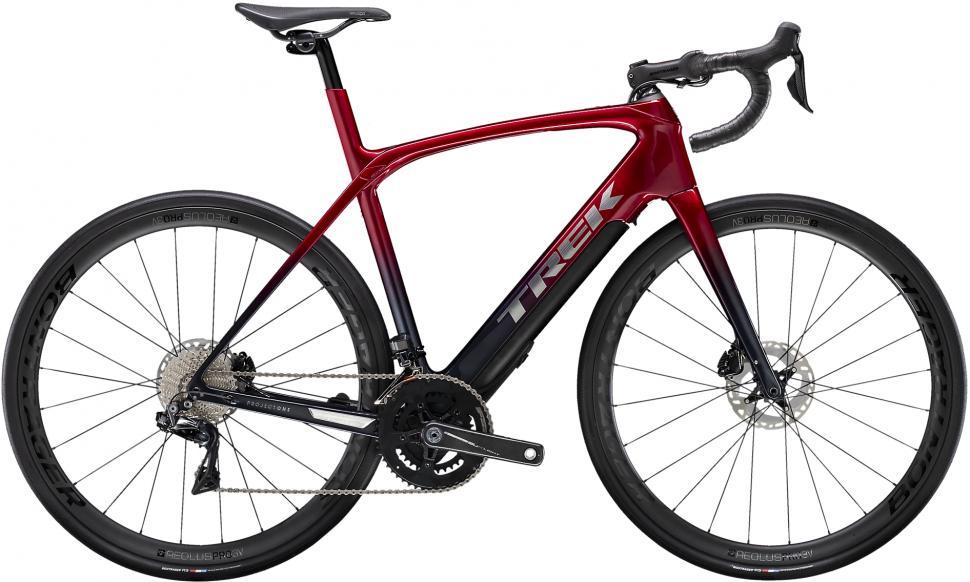
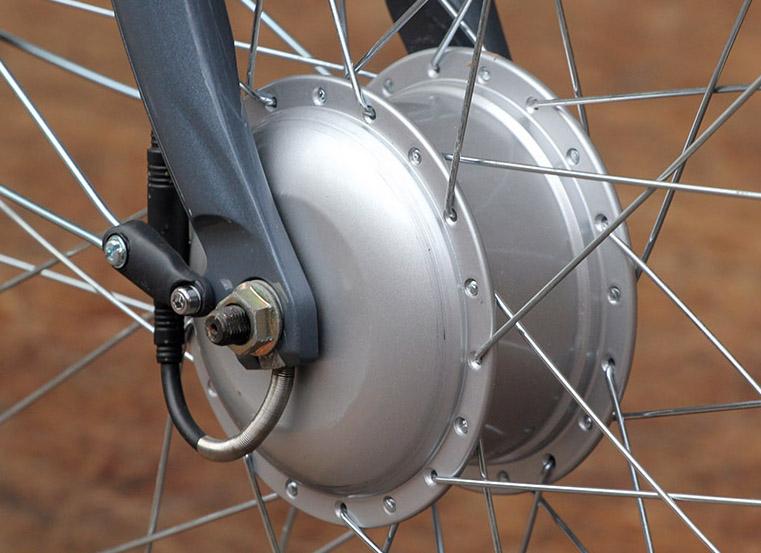
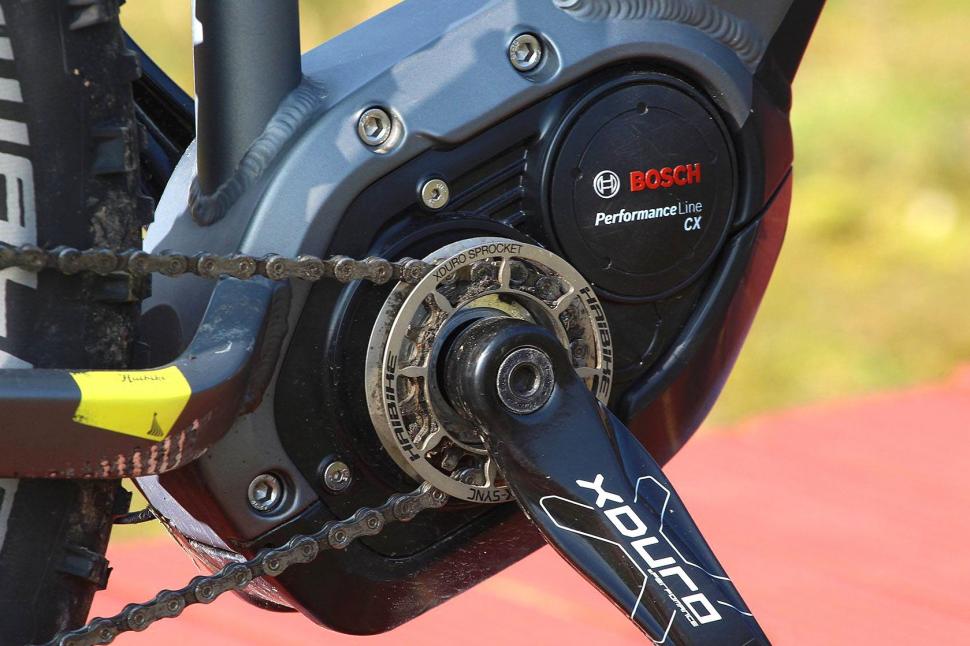
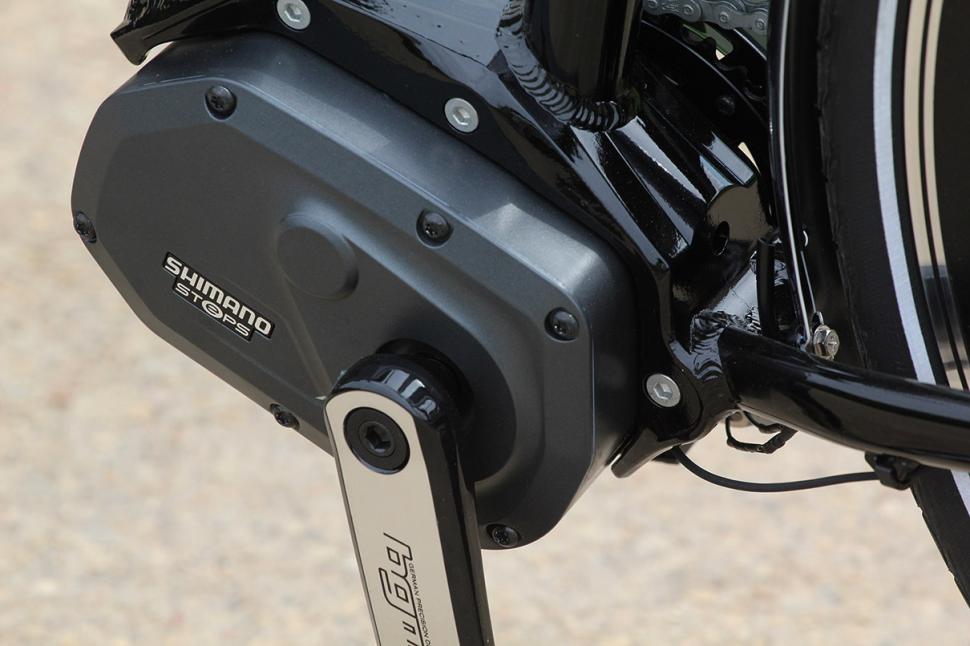
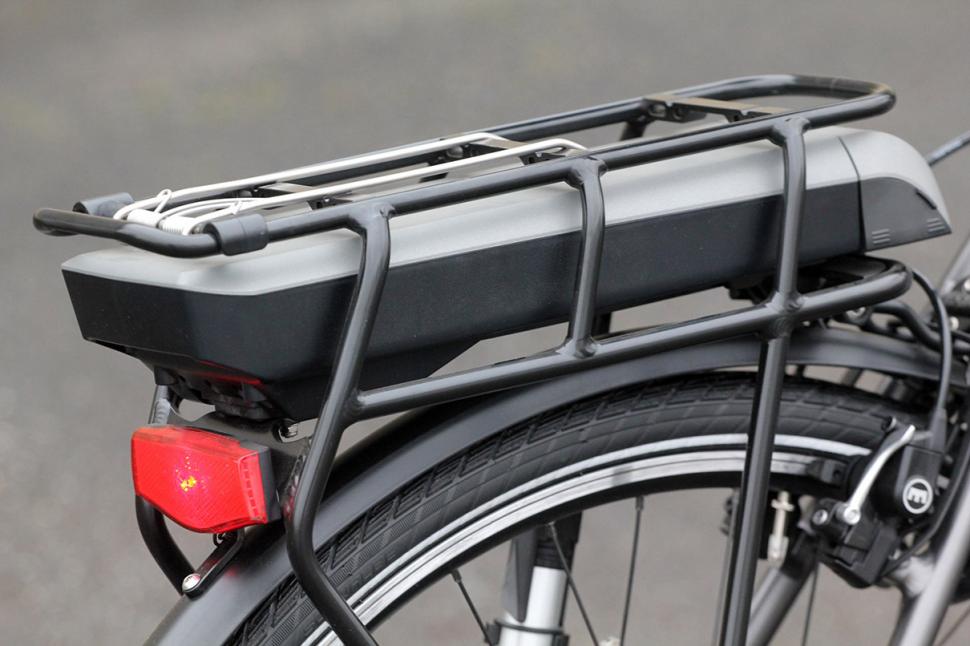
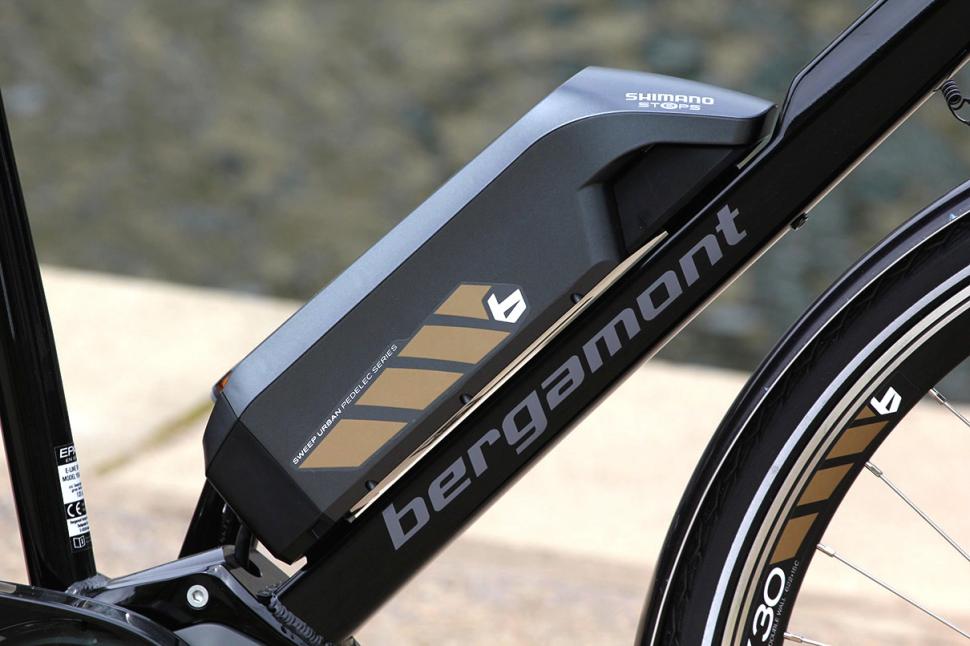
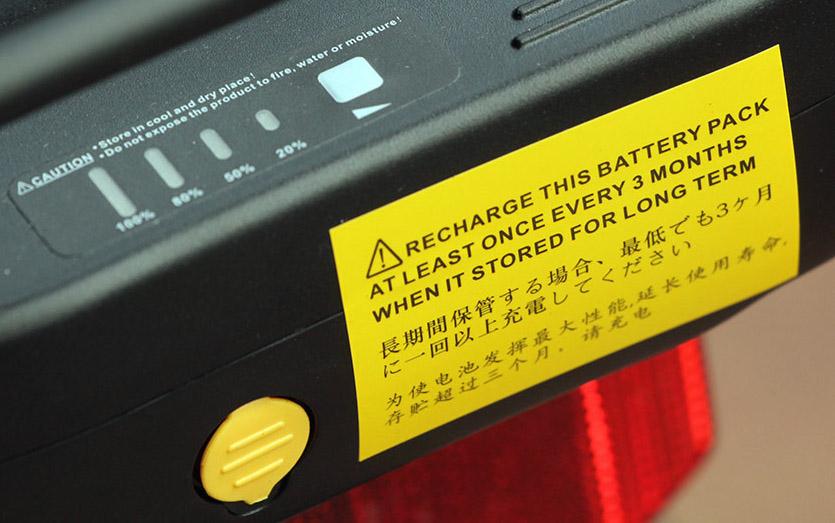
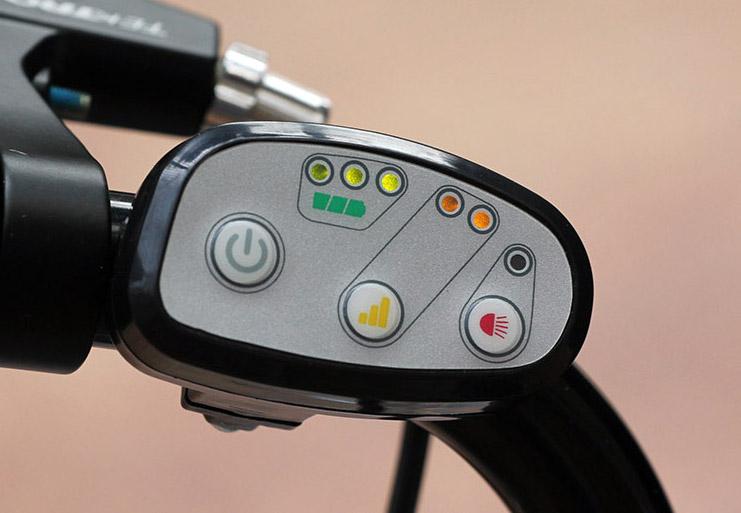
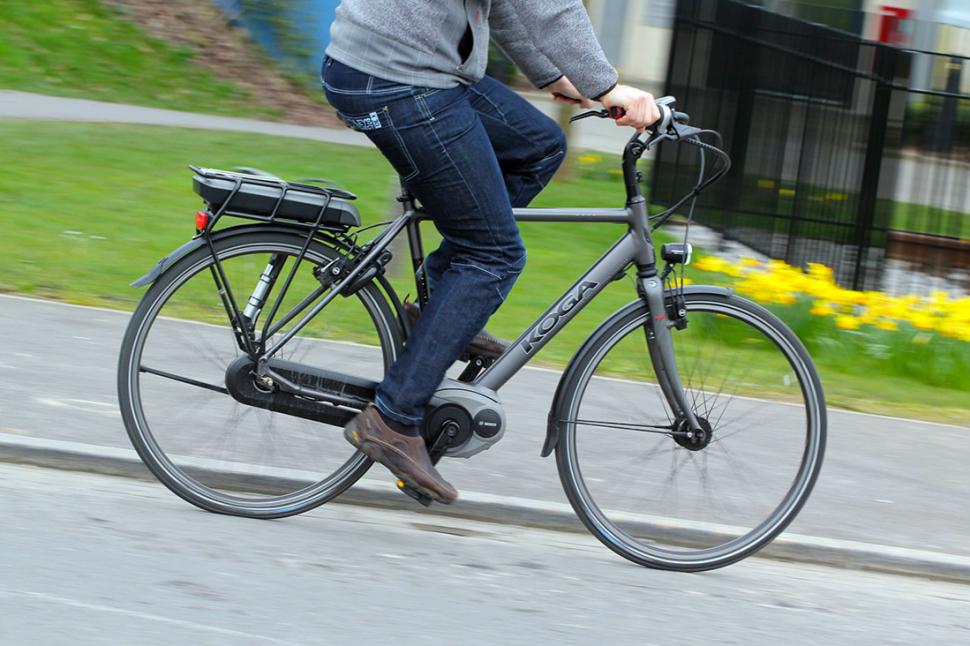
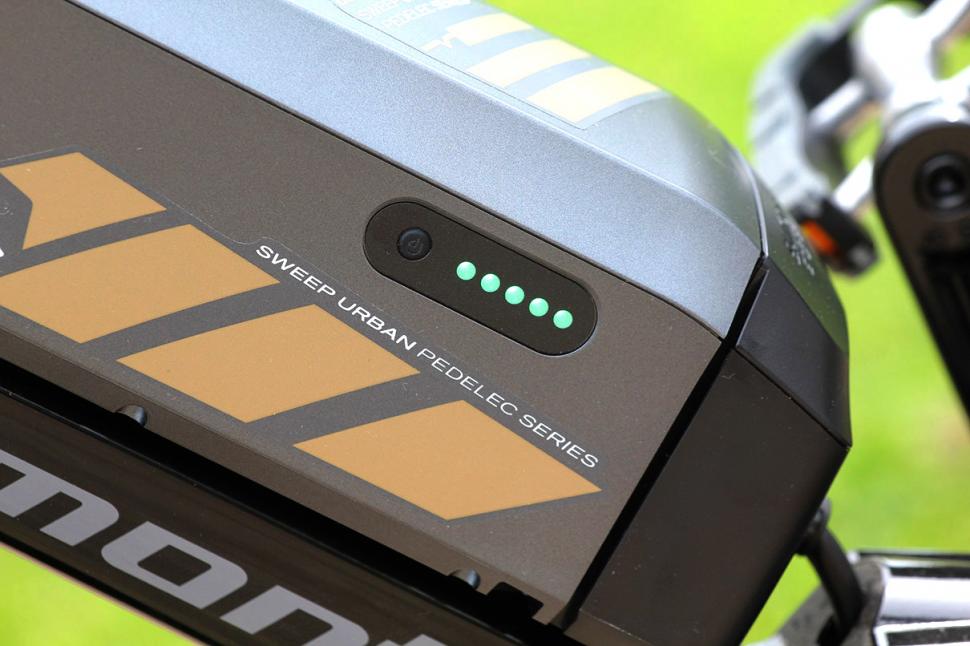
Add new comment
25 comments
Speaking with a certain amount of experience here as an 'average' rider and the owner of two ebikes (and four others... I may have a problem).
What seems to happen is that my 'touring' ebike (quite upright, big 500Wh battery, rack, lights and mudguards) gets used for exploring: long rides where I might not know where I'm going, might get lost, might find myself climbing a big hill by accident etc; I'm in 'eco' mode most of the time, but it means I don't need to worry about pacing myself in case I find a big hill when I'm in the red, can take loads of food with me, doesn't matter if I'm out for hours. Then I might go back and ride the same route or similar on a 'normal' bike later.
The funny thing is, unlike what you might see on various comparison videos, I'm more or less the same average speed on either type on a normal 50km rolling ride. Obviously on steep sections the ebike can be much faster for less effort, but on the flat the unpowered bike will be faster - 26-27kph for the ebike (just out of the assistance, but putting a little bit of effort in) versus 28-30kph for similar effort measured by heart rate. Those little 2-3kph add up and pretty much cancel out the time lost on even fairly large hills.
You might think 'so why ride the ebike at all?' It's a different experience - less stressful, less thought involved, just ride the thing, enjoy the fresh air, know that you're not racing yourself or anyone else.
They're not mentioned in the article but belt drive and internal gears are really useful for the less mechanically minded and on commuter or town bikes or for the more casual cyclist. No dirtying or snagging of your jeans or trousers on a chain, no dirty drive train to have to frequently clean and very little servicing. The total servicing of mine is a simple oil change in the hub every 3,000 miles.
The downside is they're more expensive to buy than derailleur gear systems but if you're using it regularly and look after it it'll end up being more cost effective in the long term.
I rode a Larry vs Harry Bullitt cargobike for a decade and never once changed the the oil in the hub. Considering it was doing 10k+ miles a year I think I got amazing value for money, especially when I upgraded it to electric assist.
Best of all when I came to sell it on ebay back as a normal bike I got over £500 more than what I originally purhased it for
What are they good for? Drafting. (Only the 45km/h ones, of course.)
Going by what is in the window of my lbs they are a ripoff at the moment. £2k for this bso with Claris equipment. It'd be worth about £300 if it was just a normal bike.
eMTB will be my next bike I think. I'm happy enough riding unassisted on the road for a couple of hours (which is the maximum time I'll have for a ride) no matter what the terrain, but the short sharp offroad climbs in the New Forest are a different matter. Also like the idea of having assistance for the road section on big knobbly tyres.
I was doing 35kph along the North Norfolk coastline yesterday evening when an e-MTB went past me - probably at 40kph, so 25mph. How fast do these things go, and when do they become mopeds? Nothing against them, by the way: the more people that are out there on two wheels the better.
Road legal bikes, the assistance cuts out at 15.5mph.
Maybe the rider was just fitter than you?
Off road version upto 28mph
Man up, they are just faster than you unassisted !!
Where I live, the 45km/h (28mph) versions are common and are legally similar to a moped (they have plates and the rider has to wear a helmut, but only a cycling one). They are however, bought by people who would never have bought a moped and so are really a whole new class of road vehicle (and very welcome they are, too).
My wife, 68 and with 2 new hips has an Orbea Gain D20. She is a former racer and had a step through type ebike to start with to regain her confidence after her surgery before she got the Orbea. ebikes are for her the only way she would have been able to continue her love of cycling. The only problem is she now drops me on the hills
As shown by many of the comments, e-bikes give many people, who would not otherwise be able to, the opportunity to experience the benefits of riding a bike.
For anyone else choosing to use one, they're a bit of a disgrace. You know who you are.
I'd strongly disagree. Ebikes are I think the way forward to popularising commuter cycling, getting people out of cars and on to bikes en mass. I've just got an ebike conversion kit for commuting across town, meaning I'm more likely to take my bike out over my car when it's blowing a gale/I have heavy bags. I'm a healthy 20 something man and can cycle without collapsing in a pool of sweat, but prefer to get to my destination unflustered when I'm commuting. Cycling hard is for when you're cycling as a sport, which I also do!
For anyone else choosing to use one, they're a bit of a disgrace. You know who you are.
Yes, ebikes are Cycling-Lite- the outer appearance of cycling without the tiresome heavy breathing. The telling comment was made by a devotee of ebikes in another recent topic: 'it irons out the hills'. For those who want the hills ironed out, ebikes are ideal!
With a dodgy knee it was getting so that I wasn't enjoying cycling more than ten miles or so, or tackling anything with a bit of an incline, but the e-bike as got me through that and helped build fitness and strength so that I'm now able to use my regular bikes more often. I still use the e-bike for towing my trailer with its full load of shopping, or if there's a high winds blowing.
Ebikes are for less fit people to get out and about more easily. I built an ebike for my wife last year, we would ride out a couple of times a week.
Roll on 6 months, she hasnt ridden at all. Yesterday without a thought we did 15 miles, climbed some hills and she even maNaged to make me work hard to catch her just before home, with full assist and her going for it up a slope.
That is what ebikes do
I'm drawn to the Fazua system. I've read one review here, but does anyone have an informed opinion themselves, especially if you are in a position to compare with other systems. I like it for the relativlely low weight and the fact that the whole battery + motor assembly can be removed so the bike can be used pretty much as a normal bike without any weight or mechanical drag.
I had a shot of a Focus Paralane2 9.6 (I think it was this one. It was the carbon fibre one) with the Fazua system and it was impressive - but not for me.
The Fazua 'advantage' of being able to take the motor off along with the battery is great - as long as you are going to use it like that.
I found the battery / motor unit a complete swine to get off and clip back in again - at one point I thought I was going to break the thing.
It was a new bike, but even so, with the battery and motor at the *front* of the down tube, you need a really tight fit. There is limited clearance between the down tube and the front wheel which makes holding the bike, and fighting with the battery / motor pack very, very difficult.
The bike was a loner for a couple of runs to see if I got on with it ...
There's loads of customisation of the power levels available through the app - but I wasnt allowed to dable with them. I found (just like with the Synapse Neo I ended up getting) that sitting in Eco was adequate for most situations; I have however been up the same 6% hill on both bikes and I found it easier on the Synapse than the Paralane2.
I didn't have the Paralane2 long enough to come to a conculsion about battery life or how the unit behaved on regular use.
Power on / off was smooth and quiet with no noticable thunk that I remember.
If you just want to try a Fazua for yourself, Halfords sell the Broadman ADV 8.9E (or the HYB 8.9E which is pretty much the same). Some of the Halfords stores will let you book out a test ride - and you have to remember you are evaluating the motor and not the bike.
To be honest, you really need to get on the systems yourself and test them as the Fazua may suit your riding and geopgraphical style better than mine. You may also have different requirements in the rest of the bike to mine.
Cheers dude. It's rare to get an independent comparative review. I hadn't considered how the underside placement of the power unit would make it so awkward to remove, but now that you mention it, having to slew the front wheel sideways to get decent access, I can imagine the whole machine doing one of those spontaneous manoeuvers where it ends up on the floor, handlebars clatting against your crouching head on the way down. That, and the vulnerability to road spray infiltrating the cavity, it makes me question why it was not top loaded instead. Thanks.
I've had a canyon roadlite on for a while now - it's got the Fazua motor. I really like it. Agree it's a little difficult to get in and out initially but you get used to it and it gets easier.
The bike itself is great. I can only compare to Bosch motors, but to me the Fazua doesn't haven't any of the 'jump' - it's really smooth and natural and it just feels like you have super legs. Great for the hills around me and great for getting places further than you would usually attempt - particularly confidence inspiring in traffic as you can get away from lights etc fast. I'd recommend all in all
I was hit by a car in August 2018 and a lot of bones were broken, including my left patella.
The patella was smashed in to 4 peices and the medics wired it back together; my PCL was ripped in two, and following the removal of the wires, I have been left with a limp and loss of power in the left leg. Walking a few hundred feet can be extremely painful at times; stairs take serious consideration and walking up a hill is difficult and painful. I am a blue badge holder as a result.
Where I live in Central Scotland, it's quite hilly - either in your face 9 - 12% jobs or long 1 - 3% jobs that sap the strength out of you.
I'm a hobby rider, and was built for downhill ...
Before the accident, I was cycling around 150 miles per week, in any weather and taking part in Sportives.
After the accident, and on my standard bike, I'm able to cycle around 20 miles of the flatest ground I can find, before my leg starts to hurt too badly; shove in a hill and I'm lucky if I'll be able to walk after the ride.
February this year, I brought a Canondale Synapse Neo, with a Bosch Active Plus motor and the difference is night and day.
I became able to join friends on rides; I was able to re-intergrate with the club and push on for the further rides. It didn't make me any faster, but what I did do was give me back the ability to ride without pain.
I am not over-exaggerating when I say that this bike has given me back my cycling life; its given me back my independence and (they might not be so keen on this bit), it's given me back my friends.
I mainly have the bike sitting in Eco mode and only turn it up a notch for steep hills, just so I can sit doubled up without slowing any one down. I've not had a chance to ride fully charged to flat, but the battery is easily able to cope with 80 miles at my style of riding, in the terrain I'm in, and based on multiple rides before charging.
If you love cycling, but your body is letting you down ... get an e-books. You really wont look back.
It's good to hear that you have mangaged to get back into the saddle after such horrific injuries.
Thank you.
It's not been easy, and it has taken a lot of very hard work and dedication from the physio team.
It was not an experience I can recommend to anyone; the accident might have broken bones, but I wasn't going to let it take away something I enjoy.
I bought an Orbea Gain D50 (entry level bike) for £1500 last October. It's the best thing I've ever bought. I've got COPD/Asthma and always struggled to keep up with my mates on a group ride (remember them!). I always used to avoid certain roads because of the hills and tended to keep to flatter routes (which tended to be busier A roads). Now I feel I can go anywhere and I'm getting to see a lot more quiet lanes, prettier landscape and more wildlife.
Initially I put it on full-gas whenever I went out but now I'm learning to keep it on eco setting when riding with others (not that I am at the moment). And I still feel I'm getting a workout as I can still be breathless at the top of a hill but at least I can do it without getting off and doing the walk of shame.
In terms of cheating - I thought I'd get a lot of ribbing about this. And I did initially, but all in good humour. I went on a club ride and mainly people were just interested in what it was like. I always record my rides on Strava as e-bike rides so I'm not nicking the KOMs from anyone on an acoustic bike.
Not everyone will need one, but like I said, for me it's the best thing I've ever bought.
J.